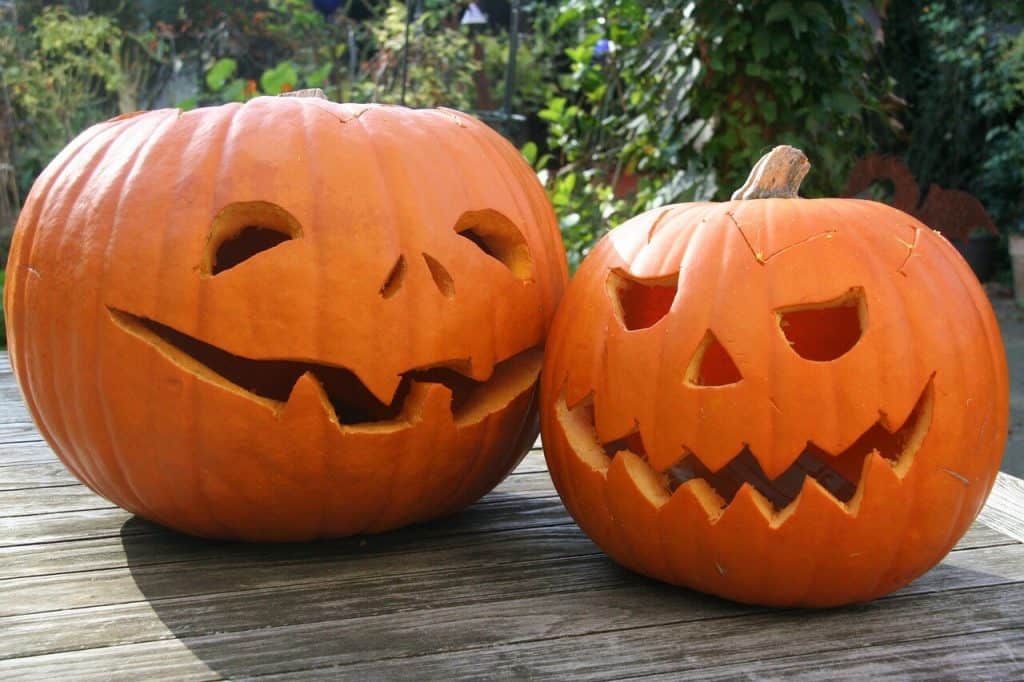Halloween is the night spirits are let loose on the world. Friendly spirits are welcomed, while evil and dangerous spirits are scared away by the glow of a carved pumpkin face. In the old world people carved turnips to frighten off the bad spirits, but when they came to America they discovered pumpkins were much easier to carve. In our times, little kids wander the streets disguised as ghosts, goblins, witches, and all sorts of monsters, knocking on doors and begging for candy by shouting, “trick or treat!” It has only been a couple hundred years since people believed in the power of evil spirits and spells placed on them by powerful diabolical witches! From the dawn of humankind Medicine Men, Shamans, Witch doctors, and witches have used plants for medical and magical purposes. They believed plants had magical qualities to protect against hexes, spells and evil spirits.
In our modern age we often continue the traditions without realizing the significance or history behind it. Red Geraniums were grown for healing of incurable illnesses and to warn a person a witch was nearby. Orange Bittersweet berries tied in a bunch and hung upside down on the door, were used to keep out negative energy and shapeshifters. Holly on the porch was a powerful magical weapon against evil, lightening, and a reminder of the mystery of seasonal dying and rebirth. Evergreens were used to purify negative energy and to protect the home from all sorts of evil and dangerous spirits.
Many plants that are grown in our gardens have a rich and dark history in magical folklore. Hellebores are an early blooming perennial, with the common names of Christmas Rose, or Lenten Rose. I have several growing in my shade garden. People felt that it had supernatural powers and could only be grown by witches due to the fact it often blooms while snow is still on the ground! The plant is toxic if consumed, and perhaps that is why it is often associated with black magic. In folklore Hellebore was used for a variety of purposes, but most commonly used in a witch’s flying ointments!
Advertisement - Story continues below
Request advertising info. View All.
In early October my Aconite, or commonly known as Monkshood or Wolfsbane, bloom in my front garden. The blue hooded flower is a perennial that grows up to three feet tall and does well in light shade. It is one of the last flowers to bloom in my garden. In the Harry Potter novels, Professor Snape chides a young Harry for not knowing the purpose of Aconite in his first potion class. As the name implies this poisonous plant was used to keep werewolves at bay!
I love the sweet perfume of Datura and Brugmansia as the scent grows stronger during the setting sun. These large flowers are often called Angel Trumpet or in the case of Datura, ‘Devil’s Apples’ referring to the spiny seedpods. Both plants are toxic if consumed and in folklore they were used in invisibility potions and for other wicked magical designs.
Many plants associated with magic and witchcraft actually had medical purposes. The Willow tree associated with water and the full moon was considered sacred by some. The bark was boiled and used for pain relief. It wasn’t until the modern age scientist discovered willow had a similar chemical makeup as aspirin.
The tall and stately perennial Foxglove has long been associated with witches, black magic and fairies. In folklore fairies loved the flower and enjoyed dancing and celebrating around the plants, often wearing the blossoms as a hat. In the late 1700s scientist discovered the plant’s chemical makeup contained the drug digitalis, which is still used today to treat heart disease.
The list of plants and their magical qualities and purposes is long and fascinating. In the age of smart phones and the internet, we might notice a pretty flower, or a stately tree. Sadly we have forgotten the sacred reverence and great value our forefathers placed on the plants we share the planet with.
Ask the Gardener
If you have any gardening questions you would like to ask Rick or topics you would love to see him cover please feel free to drop him a note and ASK THE GARDENER here.
